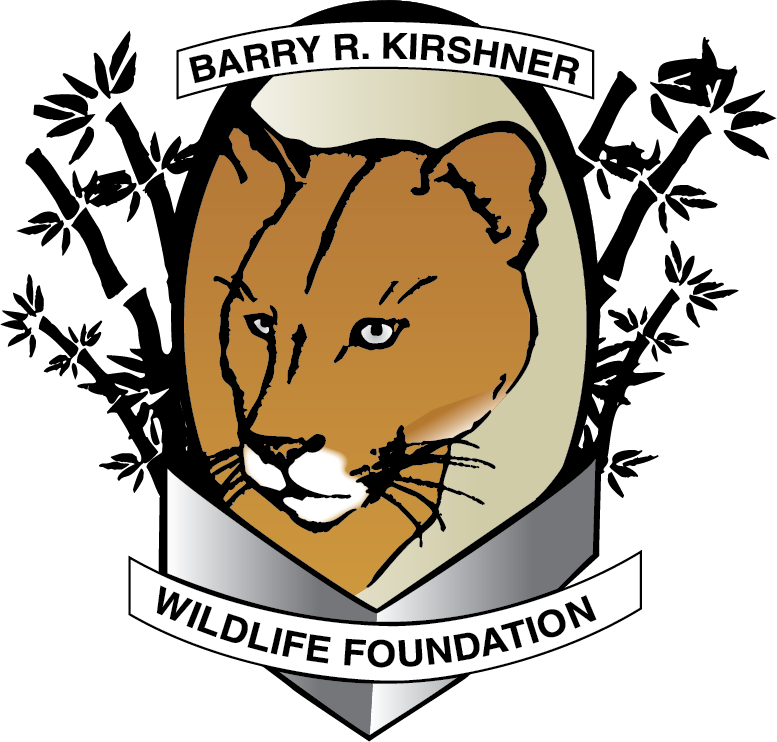Everest – Snow Leopard
Everest is a male snow leopard (Panthera uncia) born in summer 2013. He was brought here to become part of our educational and behavioral research program. A 100% healthy cat, we look forward to providing him with all that he needs to live a quality life.
At one point, the differences between snow leopards and other large cats were thought to be significant enough to place them in their own genus- Uncia. Besides major differences in ecology, morphology, and behavior, one notable difference is their inability to roar like other large cats. Although it shares its name with the common leopard and the clouded leopard, recent genetic studies demonstrated that the snow leopard is actually most closely related to the tiger. Therefore, the species has been placed back into the genus Panthera. While it has similar rosettes and broken-spot markings, they appear less well defined and are spaced further apart than leopards. The snow leopard has superb camouflage for its mountain environment of bare rocks and snow, being whitish-gray tinged with brownish/yellow, and patterned with dark gray rosettes and spots. It has lighter fur on its belly, chest and chin. The fur is long and woolly and helps protect the cat from the extreme cold of its generally mountainous habitat. Further adaptations for high altitude include an enlarged nasal cavity, shortened powerful limbs that allow them to jump up to 30 feet in a single bound, large paws for walking on the snow without sinking (think of snow shoes!), well-developed chest muscles for climbing steep mountain slopes, and a tail up to 3 feet. The long tail is thought to aid balance, and snow leopards will wrap their tails around themselves when lying or sitting for added warmth. The snow leopard can take down prey 3 times its own weight. Its main prey species are bharal, or blue sheep, and Asiatic ibex, a large wild goat. They also hunt marmot, pika, hares, small rodents, and game birds. Unfortunately, a significant number of livestock is reportedly preyed upon by snow leopards making relationships between local farmers and snow leopards challenging.
The snow leopard is found in the mountainous regions of central Asia, ranging in the north from Russia and Mongolia through China and Tibet into the Himalayan regions of Afghanistan, Pakistan and India. The snow leopard is rarely associated with dense forestation and is generally found at elevations between 10,000-15,000 feet.
As with the Tiger, the snow leopard is hunted for its bones, which are used in many Chinese medicines. This, along with the enforced decline of many of this cat’s larger prey species, places pressure on the remaining numbers of snow leopards left in the wild. It is possible that snow leopards may become extinct in the wild without continuing action by conservationists.
Mating season for snow leopards occur between January and mid-March. Couples stay with each other for a few days and this is the only time these cats do not live in solitude. Two to three cubs are born after about a 90-105 day gestation period in fur-lined dens. They stay with the mother until about 18-22 months of age.
Due to their elusive behavior, locals refer to snow leopards as “mountain ghosts”. One of the most popular episodes from the television series, Planet Earth, depicted never-before-seen footage of a snow leopard hunt, which took over 3 years to film due to how secretive they are. A solitary animal, as most cats are, they travel alone over great distances. Their home range can be as small as 18 square miles but upwards of over 620 square miles. One snow leopard was documented traveling 27 miles across an open desert in one night. Being such a mysterious species makes it difficult to study and quantify exact numbers. Researchers suspect that anywhere from 3,500-7,000 are left in the wild and another 600-700 can be found in zoos. They are classified as Endangered with a declining population trend. Their major threats include prey base depletion, poaching/illegal trade, conflict with local farmers which oftentimes results in retribution killings, and lack of conservation capacity, policy and awareness.
Snow Leopard Statistics:
Type of Animal
Diet in Wild
Diet at Kirshner Wildlife Sanctuary
Body Length
Height
Weight
Gestation Period
Number of Offspring
Life Span
Range
Habitat
Status
mammal
blue sheep, ibex, marmots, birds, rodents
chicken, beef, turkey, rabbit
3 - 4.75 feet (6 - 7.5 feet with tail)
2 feet
females: 77 - 88 pounds males: 99 - 121 pounds
93 - 110 days
2 - 3 cubs
10 - 13 years in wild, up to 22 years in captivity
mountains of Central Asia
cliffs, rocky slopes, coniferous forest scrub
endangered


